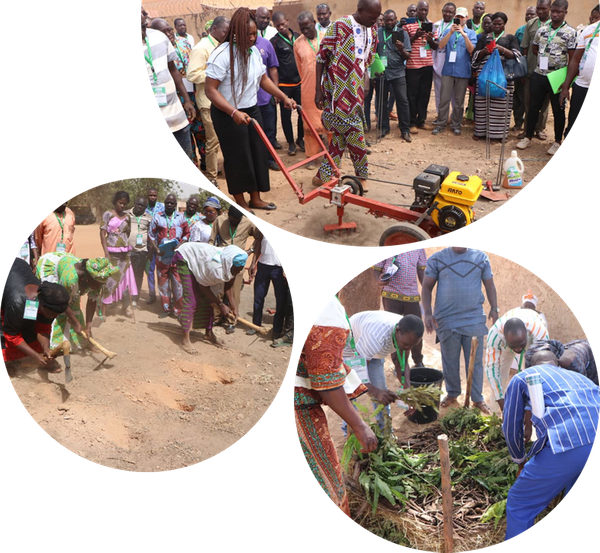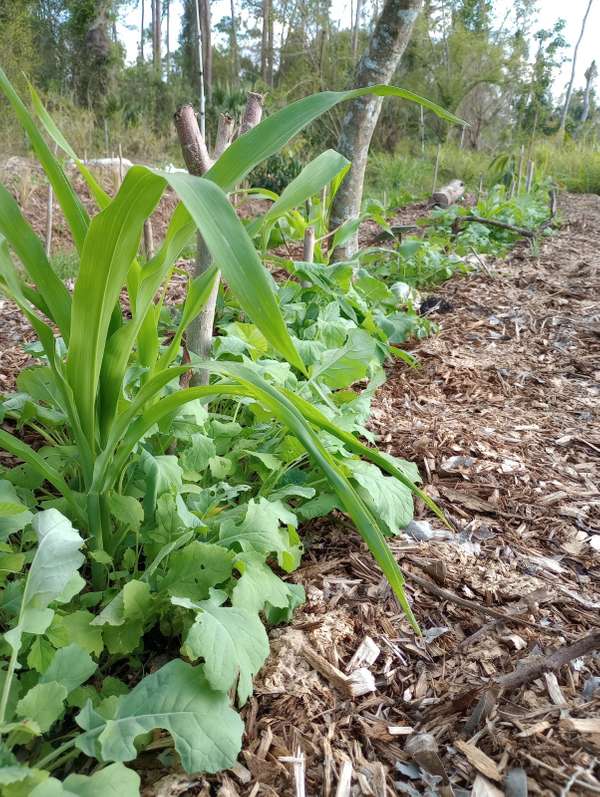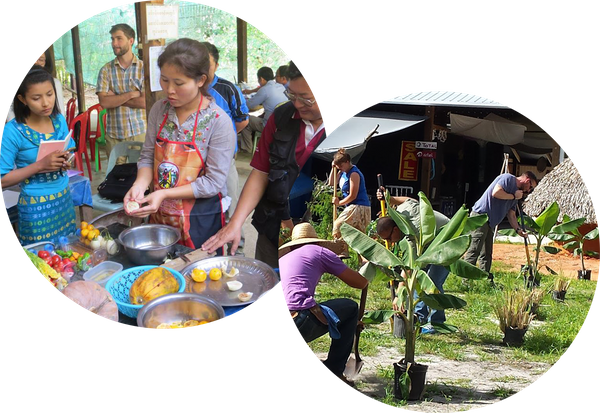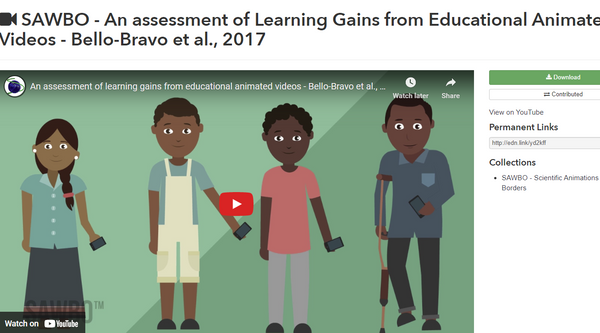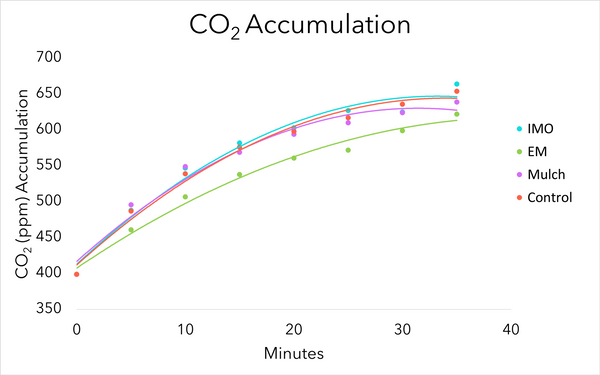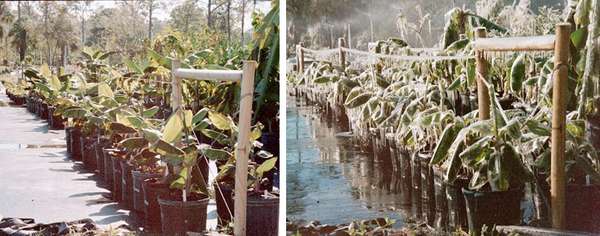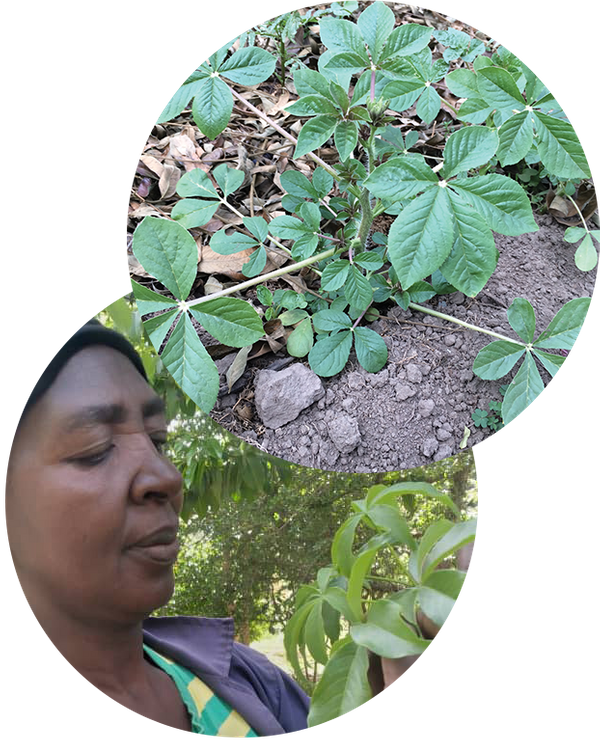Mises à jour de ECHOcommunity
ECHO Asia update - farmer with disabilites 2023-04-11
ECHO Asia has had a busy year of training already in 2023! These training events past and upcoming include topics of seed saving, on-farm feeds, biochar, bio-sand filtration, and introduction to tropical agriculture development. ECHO Asia staff visited the partner organization Christian Center for the Development of Persons with Disabilities (CDPD Thailand) to talk about options for gardening and growing crops for those with disabilities.
Explore the Conversations about AT for those with disabilities
EDN Numéro 159 Maintenant disponible 2023-04-03
Sommaire:
- Triage et récupération des petits arbres tombés
- Conférence internationale 2022 de ECHO sur l’agriculture: résumés des thèmes
- Échos de notre réseau: Lutte peu coûteuse contre les fourmis coupeuses de feuilles
- De la Banque de semences de ECHO: Guazuma ulmifolia, un arbre polyvalent
- Livres, sites web, et autres ressources: Arbres à feuilles comestibles par Eric Toensmeier
Triage et récupération des petits arbres tombés
Tim Motis et Luke Little
Extrait:
Cherchez des arbres avec des troncs intacts. Un arbre avec un tronc fendu peut être trop instable s’il est redressé. Recherchez également des arbres dont les racines sont encore attachées aux troncs. Si le système racinaire est détaché du tronc principal, il n’y aura aucun moyen pour l’arbre d’absorber l’eau et les éléments nutritifs. Enfin, recherchez des arbres suffisamment petits pour être soulevés en toute sécurité par la force humaine et/ou l’équipement disponible. Appliquez une marque ou une couleur unique sur les arbres à sauvegarder ; cela permet aux travailleurs de savoir sur lesquels concentrer leurs efforts en termes de protection des arbres.
Le forum national de ECHO Afrique de l'Ouest sur l'agriculture 2023-03-28
Le forum national de ECHO Afrique de l'Ouest sur l'agriculture durable cette année avait pour thème "Produire et Consommer Bio", au profit de 135 participants. Ce forum est le résultat des recommandations faites par les participants du forum sous-régional qui a eu lieu en septembre 2022.
Voir les présentations du forum
Les thèmes du forum ont été abordés sous forme de panels, permettant à différents orateurs de faire des communications autour des thèmes programmés, avant de passer aux ateliers pratiques. La première journée a été consacrée au thème de la fabrication et de l'utilisation des engrais organiques. Cela a permis aux formateurs de ECHO de présenter quatre différents types d'engrais organiques avant de faire la pratique pour permettre aux participants de maîtriser les différentes formules. Le thème de la fabrication et de l'utilisation des biopesticides a été présenté le deuxième jour. Cette journée a permis aux panélistes du jour de communiquer autour de quatre formules de biopesticides, tant en théorie qu'en pratique. Enfin, le troisième jour, les thèmes abordés étaient la méthode Foundations For Farming (FFF), le programme "Balo", et les techniques du hors-sol. Un temps a également été donné à l'ONG PRACTICA pour faire une présentation sur le « zainer », un outil destiné à faciliter le creusement de trous de semis dans le cadre de la FFF. Avant de conclure, plusieurs participants ont exprimé un grand enthousiasme pour la formation reçue.
Depuis deux ans, notre région, Diapaga, n'est plus approvisionnée en engrais organique à cause de l'insécurité. A travers cette formation, ECHO nous offre un nouvel espoir pour une relance de notre agriculture.
- Ismaël Bonzi, participant au Forum
From ECHO's Farm: Planting in Syntropy 2023-03-14
Earlier this February we established a Syntropic Agroforestry planting on the farm. Syntropic systems are characterized by high density plantings of food, biomass, timber, and support species. Not only are these designed to fill different strata in the canopy layers, but they are also meant to fill different strata at different times. This includes fast growing, “pioneering” plants in the canopy that will be coppiced (cut back), and longer-term, slow growing overstory species. This system even includes annuals in its succession plan. In the photo are emerging corn and cover crops interplanted densely with some of our biomass species of chaya, guazuma, gliricidia, bananas, and pink cedar (Acrocarpus fraxinifolius). These biomass hedges are punctuated by mango, coconut, and avocados. On either side of this tree row, we also have a row of biomass-producing support species that will be cut and mulched on top of the beds. In this case Tithonia and Fakahatchee grass. For more information on this type of system, and how to design a syntropic system see ECHO network member Roger Gietzen's Syntropic Farming Guidebook (free PDF download)!
Read more about Syntropic Agriculture
Restoring the Soil Second Edition - eBook Now Available! 2023-03-07
Roland Bunch's incredible catalog of smallholder farmer green manure cover crop systems is now available as an eBook! $4.99
During the last 35 years, green manure/cover crops (gm/ccs) have become recognized as an important agricultural technology. Millions of farmers use traditional gm/cc systems, and millions more now use systems developed and introduced during the last three decades. Faced with so many promising possibilities, even well-informed agronomists find it difficult to choose the best gm/cc system for a given situation. This happens in part because, unfortunately, many different factors must be considered in selecting the gm/cc systems. These factors include everything from local food habits, current market conditions, the dominant cropping systems, and the major weeds, to local economic needs, environmental conditions, and farmer preferences. Furthermore, the best gm/cc systems almost always include not just one, but several species of gm/cc.
Global Tropical Agriculture Development Courses in 2023 2023-02-28
ECHO is proud to facilitate courses about topics in tropical agricultural development. These series of courses are hands-on interactive learning experiences that are offered at ECHO's Florida and Asia campuses. The demonstration farms at these two ECHO offices provide an opportunity for immersive learning that directly applies what students are introduced to in the classroom.
The Introduction to Tropical Agriculture Development course is perfect for participants who are interested in adding agricultural components to their international work or for those recently starting in agricultural development in tropical environments. This course is held at both the Asia and Florida campuses:
ECHO Asia Introduction TAD course | March 27-April 1
ECHO Florida Introduction TAD course | July 10-14
Introduction to Tropical Agriculture Development prepares you for more in-depth courses ECHO offers on various topics such as seed saving and banking, appropriate technologies, livestock integration, and permaculture. This year, ECHO Florida is excited to hold the first-ever Tropical Agroecosystems course. Students will first be introduced to the 10 elements of agroecosystems and then apply these principles as they learn about different tropical agricultural systems such as conservation agriculture, sloping agricultural land technology, agroforestry systems, and more! Save the date: September 11-15, 2023
SAWBO videos now available here and on the ECHOcommunity mobile app in all languages 2023-02-21
Scientific Animations Without Borders (SAWBO) transforms educational information on relevant topics such as agriculture, animal and human diseases, and women's empowerment, into easy-to-understand animations. These videos are available in a diversity of languages from around the world including Spanish, French, English, and Kiswahili.
All SAWBO animations are made freely available to anyone wishing to use them for educational purposes. Animations can be downloaded and used on computers, tablets, cell phones, TVs, and overhead projection systems.
Now, you can access all of SAWBO's videos on ECHOcommunity.org and on ECHO's mobile app! Remember that once downloaded into your library, resources can be shared with friends using your preferred sharing app or method.
Natural Farming Research Note Now Available! 2023-02-14
Between 2017 and 2018, a trial was conducted comparing IMO, EM, mulch, and no mulch on a raised bed system on the ECHO Florida campus. Each of these main treatments was evaluated with and without NPK fertilizer in a split-plot, randomized complete block design. Less cotton was decomposed in the soil of the control treatment than soil of the EM soil drench treatment (P=0.0542) suggesting lower rates of microbial activity. Fertilized split treatments produced more grams of edible product than unfertilized split treatments (P<0.05). This study was conducted in a sandy soil with low organic matter. IMO or EM products may need to be “stepped up” to more stable carbon sources such as bran, compost, or manure before being utilized in soils low in organic matter.
From ECHO's Farm: Freeze Protection 2023-02-07
Every year in the winter months of December to March at ECHO Florida, we enter the potential for frost and freeze events. While our sub-tropical climate allows us to grow most tropical plants, a frost or freeze event could mean serious impacts for future yields or even the survival of more sensitive plants. Thankfully there are several strategies we employ to help protect the farm on those cold nights.
Pre-event Preparations
Two to three days before a cold weather event, it is important to make sure your soil moisture level is at or near field capacity. Wet soil can hold more heat than dry soil, therefore when we keep our soil wet, we maximize the amount of heat we can store. While impractical on a large scale, another method to increase soil temperatures is to pull back mulch from the base of the plants. This allows more solar radiation to enter the soil, thereby storing more heat. This is most effective for annuals where the crop is not covering the soil. The stored heat is then released during the cold night, creating a microclimate near the plant. This can be just enough to avoid any frost, especially when this strategy is used in conjunction with frost cloth.
Frost Cloth
Before sundown on the evening of a frost event, we cover plants that are cold-sensitive with frost cloth. Frost cloth acts as a blanket, trapping heat that is released from the soil. It is important to keep the frost cloth from directly touching the plant leaves, as any leaves touching the frost cloth can be damaged by the cold. It is also important that the frost cloth extends to the ground on all sides, as the heat will escape if there are openings. Weighing down the frost cloth and securing it with clips is a must if you want the cloth to stay in place all night, especially in windy conditions.
Irrigation
On nights when freezing temperatures occur, and weather conditions permit, we utilize our overhead and micro-spray irrigation systems to encase plants in ice. While this method may seem counterintuitive, ice encasement can be a very effective method of freeze protection. This method works provided we continually introduce more water to the plant. As water turns from liquid to solid, it must release heat. This small amount of heat release is just enough to maintain a liquid water layer between the plant leaf surface and the ice. The irrigation system must be kept on until all the ice has melted off in the morning. A good understanding of psychrometrics and a reliable irrigation system is important to prevent damage to the plants.
A combination of these methods makes it possible for us to weather frost and freeze events with minimal damage. While not covered here, other management strategies such as farm design, protected agriculture, plant selection, and crop growth stages should be taken into consideration when growing in areas where cold weather conditions could adversely affect your crops. For more information on cold protection in agriculture, check out these helpful resources: http://edn.link/freezeprotection
East Africa Note 9 Now Available! 2023-01-31
In this issue:
Food from the Wild
Erwin Kinsey
Join the Conversation about Wild Foods
Excerpt:
Traditionally, the Hadzabe, eat these plants uncooked or with minimal processing. Occasionally, wild foods are roasted over open fires, i.e., without pans or skillets but mostly raw with minimum processing. This has changed recently to some extent, depending on preferences within family clusters and their proximity to outside influence, but overall their approach to food preparation and consumption leaves a very light footprint on the earth. They continue to kill only what game they can consume, and are accustomed to sharing all things without hoarding or sense of ownership.

.jpeg?w=600)
